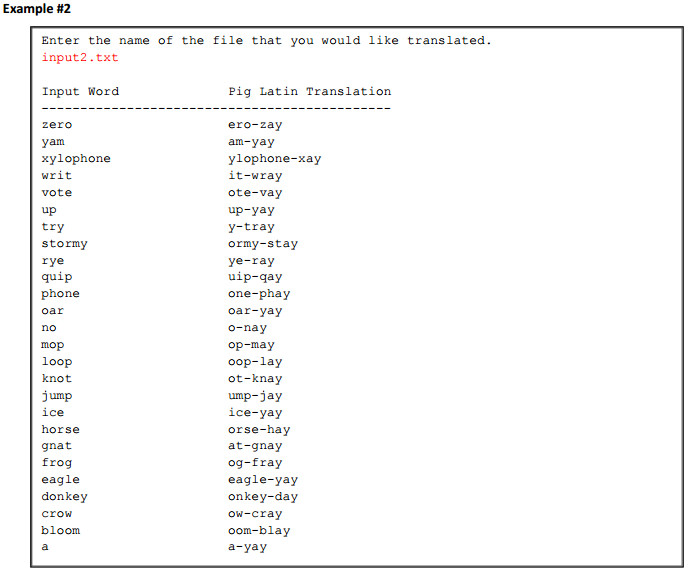
Also = Ashling.Īna – (AW-ne) Ana, or Anu, Old Irish goddess a.k.a. Aina, AnneĪirmid – (AIR-mit) daughter of a physician Dian Cecht who was one of the Tuatha De Danann, an expert in the use of herbs for medicinal purposes.Īisling – (AH-shleeng) Old Irish= aislinge “dream, or vision.” Once a man’s name, but now a popular woman’s name.
#NANE PEIG IN ENGLISH MAC#
A stage play named Peig: The Musical! (co-written by Julian Gough, Gary MacSweeney and the Flying Pig Comedy Troupe) was also loosely based on Peig's autobiography.Aideen – Oscar’s wife,he was grandson of Finn mac Cumhail.Īilionora – (e-le-NOH-ra) Irish = Eleanor.Īilis – (AY-lish) “noble, kind.” Irish = Alice, from Norman French name Aliz.Īine – (AW-ne) Old Irish: aine “brilliance, wit, splendor, glory.” Aine was the daughter of Fer I (Man of the Yew) and queen of the fairies of south Munster was believed to live at Knockany (Cnoc Aine, “Aine’s Hill”). In Paddy Whackery, a television show on the Irish language television channel TG4, Fionnula Flanagan plays the ghost of Peig Sayers, sent to Dublin to restore faith in the Irish language. Seanad Éireann - Volume 183 - 5 April 2006

No matter what our personal view of the book might be, there is a sense that one has only to mention the name Peig Sayers to a certain age group and one will see a dramatic rolling of the eyes, or worse. It led, for example, to this comment from Senator John Minihan in the Irish Senate in 2006 when discussing improvements to the curriculum: “

From 1960 the Irish population was urbanising, a process that led to the " Celtic Tiger" economy in the 1990s, and Peig's tales of woe in rural surroundings confirmed to many students that Irish was a language of poverty and misery, while English was considered the language of science and commerce. As a book with arguably sombre themes (its latter half cataloguing a string of family misfortunes), its presence on the Irish syllabus was criticised for some years. The book was for a long time required reading in secondary schools in Ireland. Had I known in advance half, or even one-third, of what the future had in store for me, my heart wouldn't have been as gay or as courageous it was in the beginning of my days. I have experienced much ease and much hardship from the day I was born until this very day. I am an old woman now, with one foot in the grave and the other on its edge. The often bleak tone of the book is established from its opening words: “ Peig depicts the declining years of a traditional, Irish-speaking way of life characterised by poverty, devout Catholicism, and folk memory of the Famine and the Penal Laws. Parody of the type reached its zenith with Flann O'Brien's satire of an tOileánach as an Béal Bocht ("the Poor Mouth"). The movement swiftly found itself the object of some derision and mockery – especially among the more cosmopolitan city dwellers of Ireland - for its often relentless depictions of rural hardship. Flaherty's documentary Man of Aran address similar subjects. Tomás Ó Criomhthain's memoir an tOileánach ("the Islandman", 1929) and Robert J.

Peig is among the most famous expressions of a late Gaelic Revival genre of personal histories by and about inhabitants of the Blasket Islands and other remote Irish locations. Sayers's autobiography was dictated to her son Micheál and published in 1936. Sayers is most famous for her autobiography, Peig, ISBN 0-8156-0258-8, but also recounted folklore and other stories which were recorded in Machnamh Seanmhná/An Old Woman's Reflections, ISBN 978-0-19-281239-1. Her surviving children, except for her son Micheál, emigrated to the USA and live with their descendants in Springfield, Massachusetts. She is buried in the Dún Chaoin Burial Ground, Corca Dhuibhne, Ireland. She was moved to a hospital in An Daingean, Co. She continued to live on the island until 1953, when the island was abandoned due to declining population. Peig was illiterate in the Irish language although she received her early schooling through the medium of English, but dictated many of her stories to Seosamh Ó Dálaigh of the Irish Folklore Commission and Dr. She moved to the Great Blasket Island after marrying Pádraig Ó Guithín, a fisherman and native of the island. She spent much of her early life as a domestic servant working for members of the growing middle class produced by the Land War. It has been suggested that An Old Woman's Reflections be merged into this article or section.


 0 kommentar(er)
0 kommentar(er)
